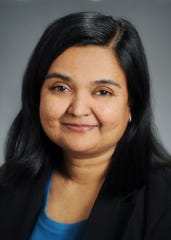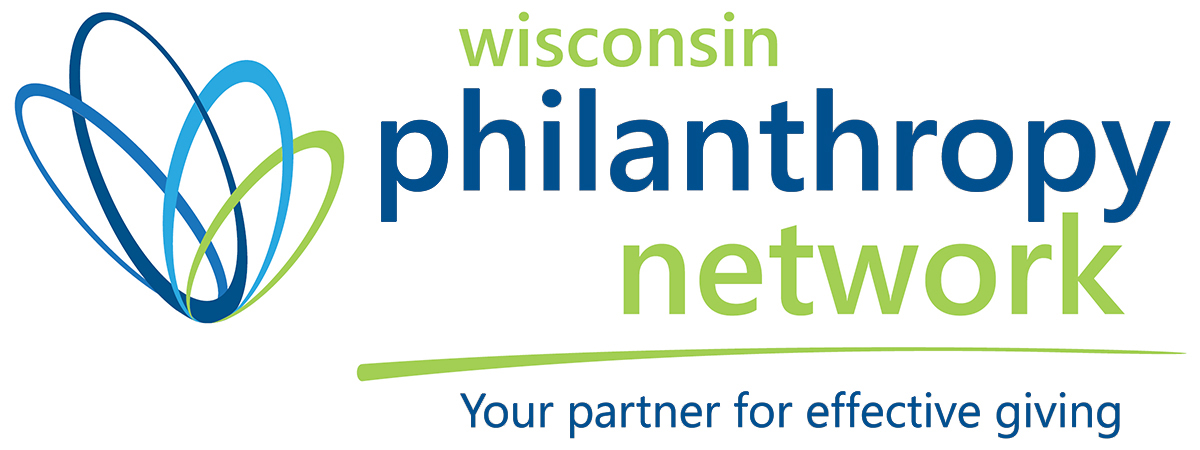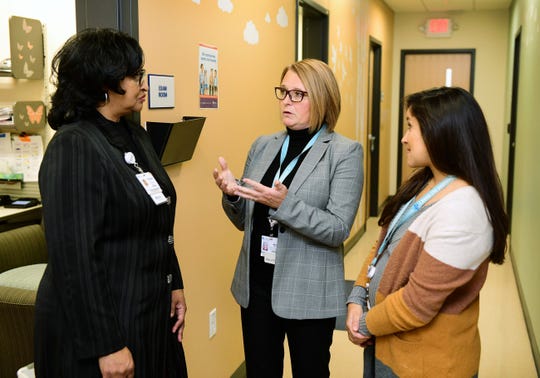Children’s Wisconsin on Tuesday will announce an ambitious five-year plan to significantly improve access to behavioral health care for children and adolescents.
The plan is projected to cost $150 million over five years and includes an array of initiatives to address the severe shortage of psychiatrists, psychologists and therapists.
Children’s Wisconsin, the new name of Children’s Hospital of Wisconsin, hopes to roughly double the number of professionals who provide behavioral health care in its system. It now has 137 psychiatrists, psychologists, psychiatric nurse practitioners and therapists.
Getting an appointment with a therapist can take eight weeks in the Milwaukee area, and a child or adolescent can wait six months or longer for an appointment with a child and adolescent psychiatrist.

Peggy Troy is president and CEO of Children's Wisconsin (Photo: Children's Wisconsin)
“I get calls and hear from families on a regular basis about the desperate need they have for these services for their kids and how difficult it is to access them in a timely fashion,” said Peggy Troy, the president and CEO of Children’s Wisconsin.
The three broad goals of the initiatives are:
- Improving access to behavioral health care
- Providing early detection and prevention as well as educating parents and others about behavioral health.
- Reducing the stigma still associated with mental illness.
“We are not going to fix everything,” Troy said. “But we are going to fix a lot.”
Revenue from commercial health plans and BadgerCare Plus, the state’s largest Medicaid program, will partly offset the projected cost of the initiatives. Other sources of money include Children’s own funds, private gifts, and state and federal grants.
The initiative is part of the growing recognition that behavioral health care is an integral part of health care. And Troy and others have noted that it not only can change children’s lives but also can change the trajectory of their adult lives.

Smriti Khare is a pediatrician and president of Children’s Primary Care (Photo: Children's Wisconsin)
“Every child deserves the opportunity of being healthy and thriving,” said Smriti Khare, a pediatrician and president of Children’s Primary Care.
Children’s hopes to have a therapist in every one of its clinics as part of the initiative.
Historically, behavioral health care was seen as separate from traditional medical care. And mental illness has long been accompanied by a stigma.
Parents with a child who has cancer are likely to receive an outpouring of support from family and friends, Troy said. In contrast, parents with a child with a behavioral health condition are likely to not talk about it.
“The stigma is huge,” she said.
That often is an obstacle in parents’ getting the resources and help they need. But this also is changing: Behavioral health conditions increasingly are being seen as no different than other diseases.
“Kids are talking about this a lot more than we ever did,” Troy said.
A screening program for adolescent depression now in place throughout the health system has found 16,000 patients who needed follow-up care since 2016.
RELATED: You're Not Alone: A documentary and suicide-prevention toolkit
Examples of behavioral health conditions that affect children and adolescents include anxiety, attention deficit/hyperactivity disorder, obsessive-compulsive disorder and suicidal ideation.
They also include oppositional defiant disorder, in which a child is defiant and hostile toward other children, parents and teachers, and reactive attachment disorder, in which an infant or young child doesn’t form an emotional bond with his or her parents or other caretakers.
The incidence of behavioral health conditions is higher among children and adolescents who are growing up in poverty and the trauma that can accompany unstable housing, food insecurity and unsafe neighborhoods.
One in five children in Milwaukee lives in poverty, based on the poverty threshold of $21,330 for a family of three.
This increases the demand for behavioral health care for children and adolescents as well as parents, said Amy Herbst, Children’s vice president of mental and behavioral health.
Troy noted that the Milwaukee area has some good programs that provide behavioral health care to children and adolescents, citing Advocate Aurora Health and Rogers Behavioral Health. She said Children’s doesn’t want to duplicate services.
The health system, for example, is working more closely with Rogers Behavioral Health.
Children’s hopes to do the same with other organizations to help create an integrated and sustainable system of behavioral health care for children and adolescents — one that “ensures that kids get what they need when they need it,” Troy said
“Now will we be done in five years? No,” she said. “But will we have made strides in five years? Absolutely.”
All this still is in the initial stages. Children’s Wisconsin has received donations to help support its initiatives. They include:
- A $5 million gift from Kohl’s in March to support screening, school-based programs and increase overall awareness.
- A $1 million gift from the Rexnord Foundation.
- A $1 million gift from Boldt Corp. that will partly fund a new training program for therapists.
As part of its plan, Children’s began a program in July in which it will pay therapists as they work toward the 3,000 hours of additional training required after earning a master’s degree to be licensed.
The therapists now are rarely if ever paid while getting the additional training. Children’s will pay them $30,000 to $40,000 a year, plus benefits.
It has five people in the program and plans to accept five people each year.
Children’s also has been expanding its school-based program and now has therapists who provide behavioral health care in 47 schools.
“What is great about that program is it eliminates many of the barriers to access to behavioral health,” Herbst said.
It also helps eliminate the stigma associated with behavioral health conditions and helps teachers understand children who may be struggling in school.
Several of Children’s initiatives will focus on the acute shortage of psychiatrists, psychologists, psychiatric nurse practitioners and therapists.
The shortage of psychiatrists, for instance, is the most severe of any medical specialty, according to Merritt Hawkins, which recruits physicians and other health care professionals.
In the next five years, Children’s hopes to:
- Hire 50 additional therapists. It now employs 70 therapists.
- Train 20 therapists in its program that will pay them while they work toward becoming licensed.
- Hire 18 psychiatrists or psychiatric nurse practitioners. It now has 12 child and adolescent psychiatrists and two psychiatric nurse practitioners.
- Hire 25 health psychologists, who help patients during an illness or recovery. It now has 41 psychologists. (Psychologists have doctorates. Therapists have master’s degrees, typically in social work or clinical psychology.)
- Expand its fellowship program for child and adolescent psychiatrists by eight slots, up from eight now. (Physicians who want to specialize in child and adolescent psychiatry complete a three-year residency in general psychiatry and a two-year fellowship.)
Hiring additional psychiatrists will be a challenge. The same goes for expanding the fellowship program: Children’s now has an unfilled fellowship.
But Khare, president of Children’s Primary Care, said most behavioral health care for children and adolescents can be provided by therapists. And pediatricians now know more about behavioral health.
A key part of Children’s plan is early detection of behavioral health conditions, including before the age of five.
That is one of the most critical ages for development, Herbst said.
Early detection includes screening children for bonding, eye contact and verbal skills and focuses on parents as much as the child.
The goal is to give parents the needed tools and the resources that would be available if they had a child with cancer or congenital heart disease, Troy said.
Troy readily acknowledges the challenges that Children’s will face in implementing the initiatives and in reaching its goals.
“I am very confident we are on the road to do something that could be very impactful,” she said. “It is going to be hard. There are going to be setbacks. At the end of the day, it’s the right thing to do.
“It’s what we’ve got to do, and we’ll figure it out.”




